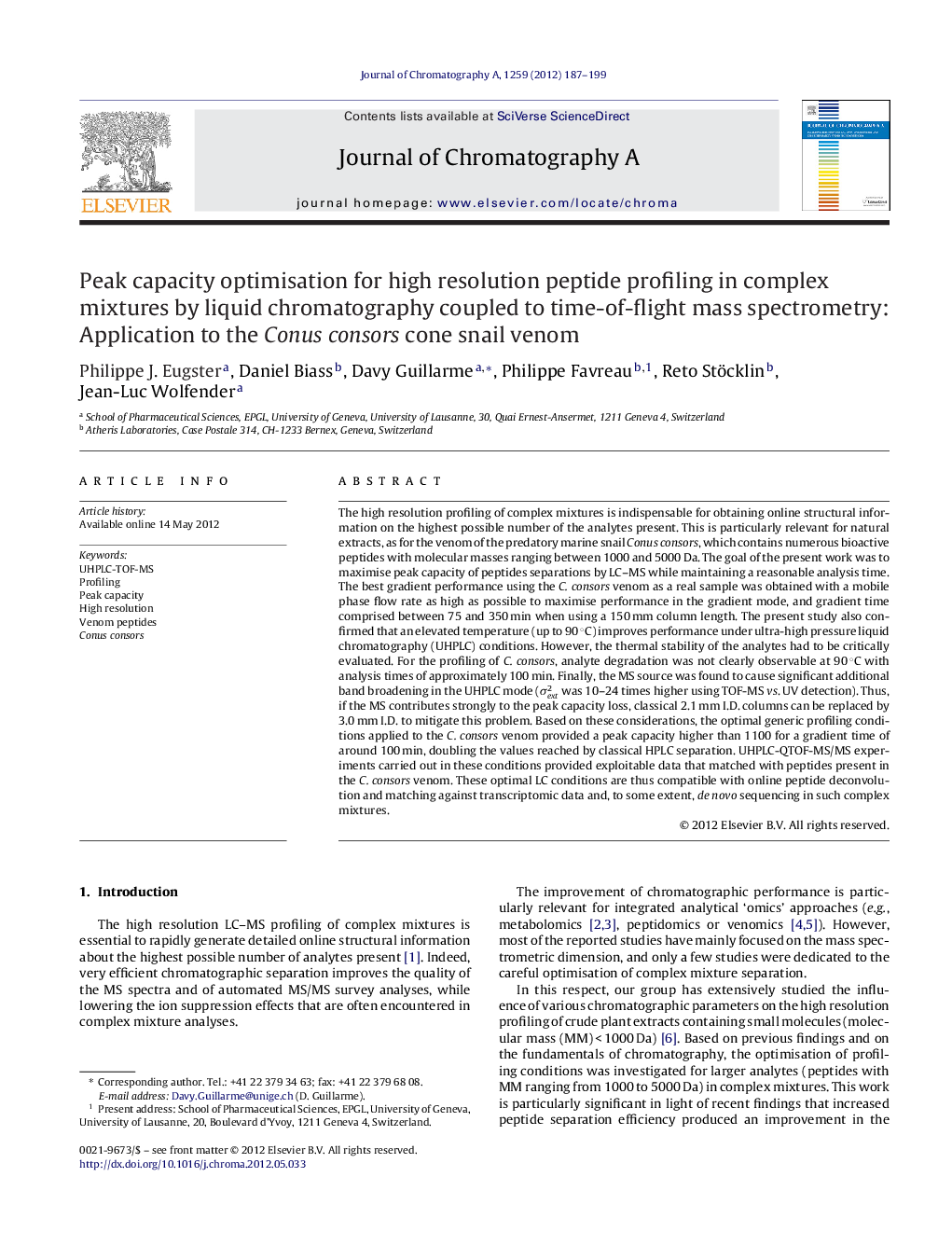| کد مقاله | کد نشریه | سال انتشار | مقاله انگلیسی | نسخه تمام متن |
|---|---|---|---|---|
| 1202332 | 1493666 | 2012 | 13 صفحه PDF | دانلود رایگان |

The high resolution profiling of complex mixtures is indispensable for obtaining online structural information on the highest possible number of the analytes present. This is particularly relevant for natural extracts, as for the venom of the predatory marine snail Conus consors, which contains numerous bioactive peptides with molecular masses ranging between 1000 and 5000 Da. The goal of the present work was to maximise peak capacity of peptides separations by LC–MS while maintaining a reasonable analysis time. The best gradient performance using the C. consors venom as a real sample was obtained with a mobile phase flow rate as high as possible to maximise performance in the gradient mode, and gradient time comprised between 75 and 350 min when using a 150 mm column length. The present study also confirmed that an elevated temperature (up to 90 °C) improves performance under ultra-high pressure liquid chromatography (UHPLC) conditions. However, the thermal stability of the analytes had to be critically evaluated. For the profiling of C. consors, analyte degradation was not clearly observable at 90 °C with analysis times of approximately 100 min. Finally, the MS source was found to cause significant additional band broadening in the UHPLC mode (σext2 was 10–24 times higher using TOF-MS vs. UV detection). Thus, if the MS contributes strongly to the peak capacity loss, classical 2.1 mm I.D. columns can be replaced by 3.0 mm I.D. to mitigate this problem. Based on these considerations, the optimal generic profiling conditions applied to the C. consors venom provided a peak capacity higher than 1100 for a gradient time of around 100 min, doubling the values reached by classical HPLC separation. UHPLC-QTOF-MS/MS experiments carried out in these conditions provided exploitable data that matched with peptides present in the C. consors venom. These optimal LC conditions are thus compatible with online peptide deconvolution and matching against transcriptomic data and, to some extent, de novo sequencing in such complex mixtures.
► The TOF-MS device is a non-negligible source of additional band broadening in UHPLC.
► A 3 mm I.D. column can be of interest in UHPLC if the MS device strongly contributes to peak capacity loss.
► Elevated temperature is a valuable way to improve performance in gradient mode with peptides.
► A peak capacity of 1100 was experimentally achieved in 100 min for the profiling of Conus consors venom.
Journal: Journal of Chromatography A - Volume 1259, 12 October 2012, Pages 187–199